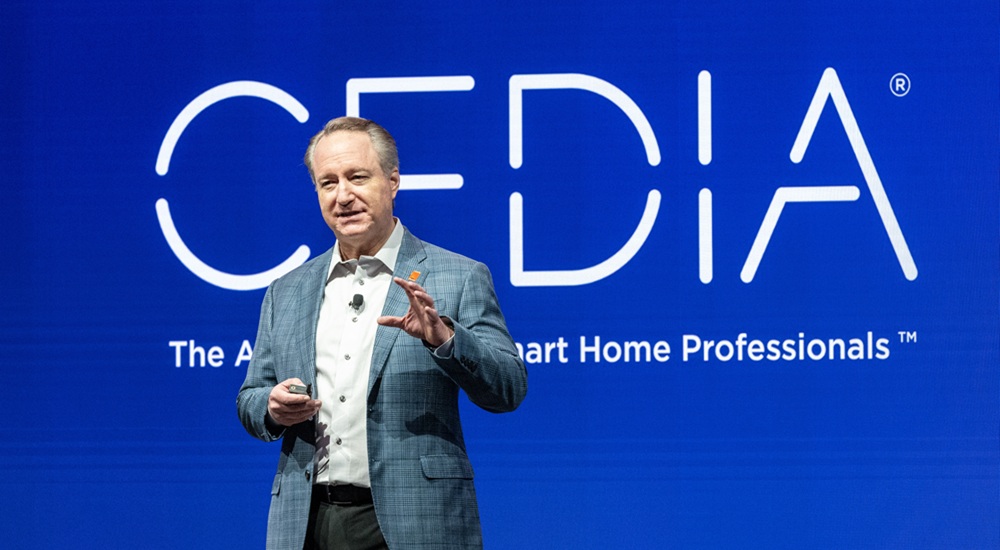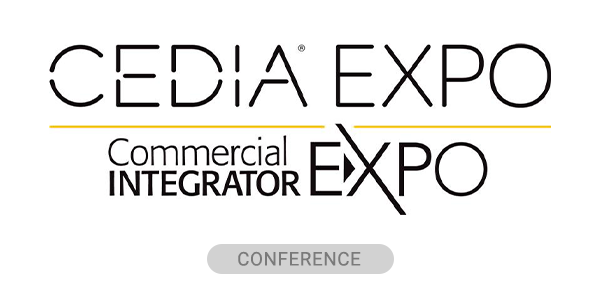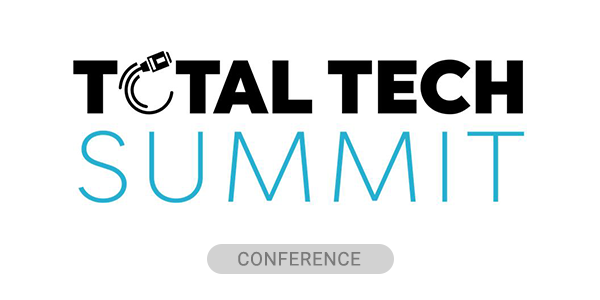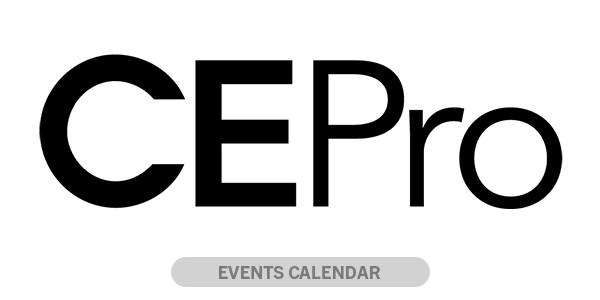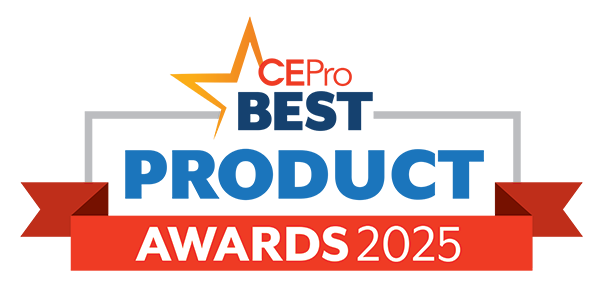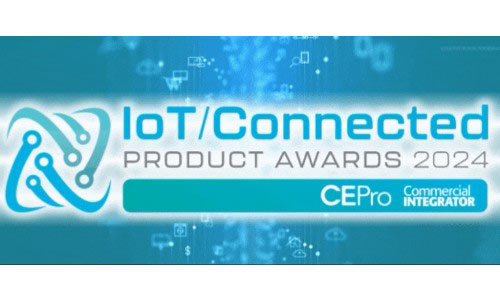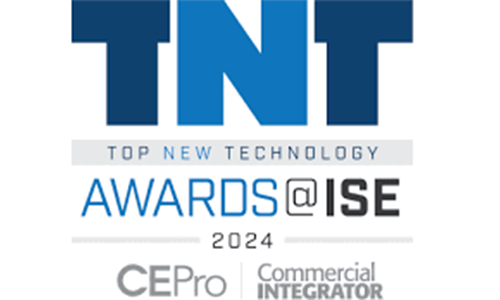Becoming a part of the design-build community and gaining entry to projects during the design phase has long been a goal of the custom integration industry, and CEDIA Expo/CIX 2025 made it clear that industry forces are set on making that a reality.
Several educational sessions (including a few on the Smart Stage), some manufacturer innovations, and even the annual CEDIA Town Hall during the event were all pulling in that same direction. In fact, this topic was the focal point of that very town hall, with CEDIA’s Global President and CEO Daryl Friedman and the National Kitchen and Bath Association’s (NKBA) President and CEO Bill Darcy discussing the results of a new joint study of the two organizations.
The report, “Technology Integration in Kitchen, Bath, or Whole Home Design Projects,” explores how technology is being integrated into kitchens, baths, and whole-home design. The research provides a detailed snapshot of consumer demand, professional adoption, and barriers to growth in the smart home space.
Let’s dive into some of the data that was unveiled at this year’s CEDIA Expo.
CEDIA, NKBA Study Reveals Rising Demand, Uneven Conversion
According to the data, 68% of design professionals reported greater interest in smart technology compared to two years ago. Technology is more common in new builds (53%) than remodels (34%), and whole-home projects (64%) outpace kitchens (57%) and baths (55%). But while awareness is high, conversion to installation lags, revealing a messaging and positioning problem.
- Bath: Heated floors are nearly universal in awareness (92%) but only installed in half of projects. Exhaust fans stand out with 87% awareness and a 75% conversion rate, suggesting they are a clear “easy win” category. Smart toilets and bidets (86% awareness, 50% conversion) and heated towel bars (32% conversion) highlight demand for comfort-driven solutions.
- Kitchen: Lighting control (84% awareness, 55% conversion) leads the way, but motion sensor faucets (37%), smart ovens (30%), and refrigerators (26%) demonstrate significant drop-off. These are categories where designers and integrators could better explain long-term value.
- Whole Home: Video doorbells (91% awareness, 31% conversion), motorized blinds (32%), and smart lighting (25%) are widely recognized yet underinstalled. Security cameras, despite 89% awareness, convert at just 21%.
The data suggests integrators should focus on high-conversion categories like ventilation and lighting to build credibility with designers, while also working to close the gap in whole-home categories where demand is strong but follow-through is weak.
Awareness Gap Between CEDIA and NKBA Members
Perhaps the most troubling finding is the lack of visibility. Only 32% of NKBA respondents had heard the term “integrator.” Just 14% had actually worked with one, and 35% of designers admitted they often need an integrator but don’t know where to turn. Among those who had collaborated, integrators were engaged nearly as much as designers during planning and design, showing that once relationships are established, their role is recognized and valued.
This is the clearest signal yet that the CI industry has a marketing problem. Homeowners are asking for technology. Designers see the need. But integrators are not positioned as a natural part of the process. Without stronger outreach into the design-build ecosystem, integrators risk remaining an afterthought, pulled in late when budgets are already locked.
Who Drives the Tech Conversation?
Another revealing data point is who brings up technology in the first place:
- Homeowners: 75%
- Designers: 53%
- Builders/remodelers: 36%
- Integrators: 9%
Homeowners are overwhelmingly the ones starting the conversation. Professionals, including integrators, are not leading the charge. This reactive posture leaves opportunity on the table. For integrators, becoming the proactive voice for technology, especially with designers who already hold homeowner trust, could shift more projects in their direction.
Barriers and Areas of Opportunity for CEDIA and NKBA Companies
Homeowners point to cost (86%) as the top barrier, but also cite complexity (77%), lack of understanding of benefits (70%), privacy concerns (46%), concerns about upgrades (42%), and past negative experiences (20%). Designers echo many of these, particularly complexity (58%) and lack of understanding (54%). Nearly half (46%) admit they don’t know who to partner with.
This shows that while price is the headline barrier, the deeper issue is clarity. Integrators who can simplify the experience, demonstrate reliability, and explain long-term value have a chance to turn skepticism into adoption.
Gen X remains the dominant group driving adoption at 71%, but Millennials are emerging, with 52% of families with children requesting smart technology compared to 37% without kids. Men still drive most requests (93%), but women at 48% represent a significant growth opportunity. Upper-middle-income households are the strongest adopters (74%), followed by high-income households (38%). Most projects involve primary residences (96%), but secondary homes are a growing niche at 38%, aligning with luxury trends seen in CEDIA projects.
The benefits homeowners value most, like convenience (83%), security (74%), energy efficiency (65%), entertainment (65%), and comfort (59%), suggest integrators need to tailor their messaging. Wellness narratives may resonate with women and Millennials, while security and convenience remain anchors across all groups.
Outlook and Implications of Study
Currently, 44% of respondents view integrated technology as a must-have. Looking ahead, that number rises to 56%, with CEDIA members already rating it as essential today. The trajectory is clear: integrated technology is moving from luxury to expectation.
For integrators, the study delivers a roadmap. Target categories with high awareness but low conversion. Build visibility among designers who are actively searching for partners. Focus messaging on simplicity and reliability to counter complexity and upgrade concerns. And adapt outreach to emerging demographics, including Millennials, women, and secondary-home clients.
The NKBA-CEDIA partnership aims to close the awareness gap by putting integrators into the design conversation earlier. If successful, it could finally move the industry closer to the long-standing goal of being embedded in projects at the design phase rather than being called in late.
